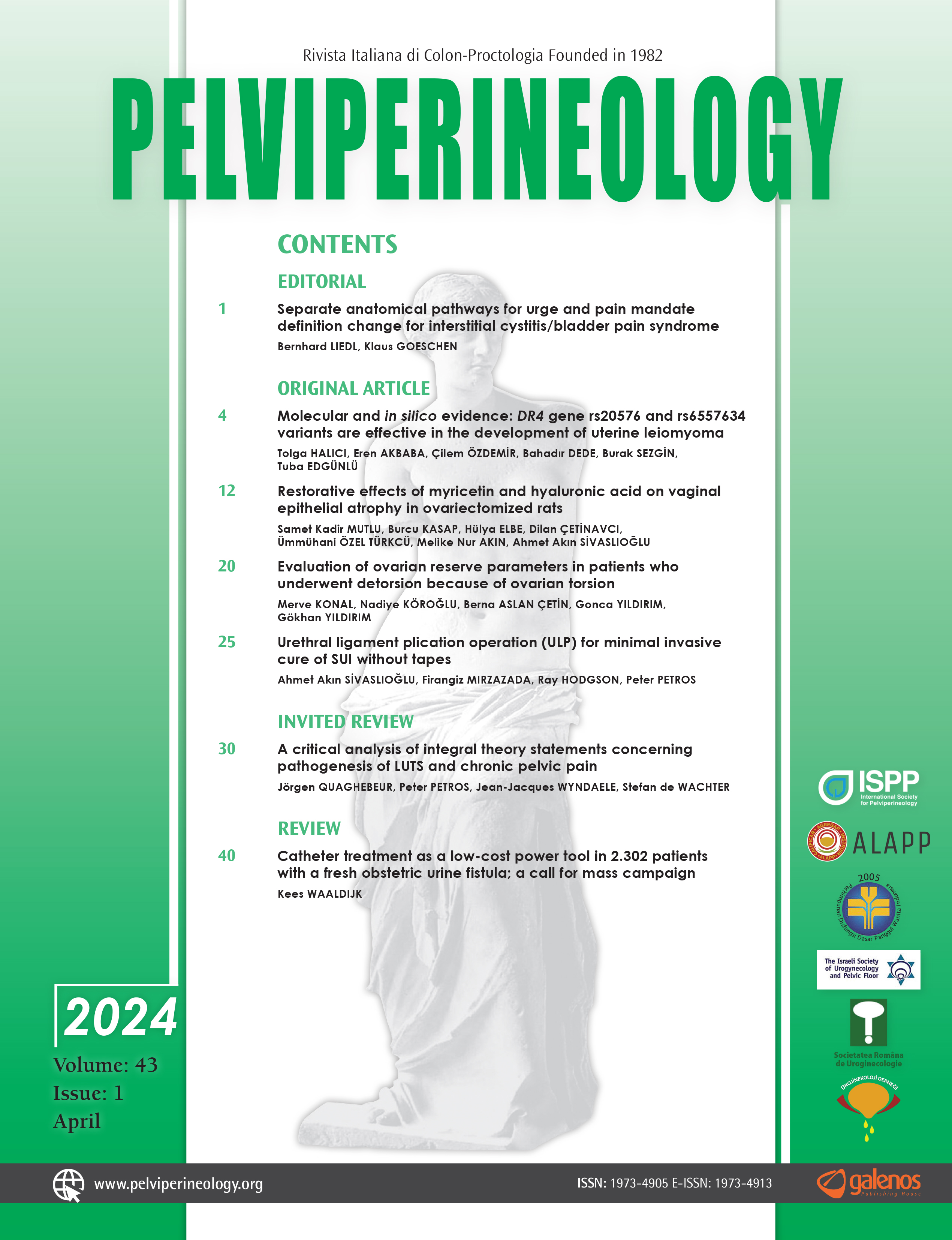Quick Search
Management of complex pelvic floor dysfunctions: Combined versus single surgical procedure in a multidisciplinary approach. A prospective study
Simona ASCANELLI1, Laura CHIMISSO1, Sara MONTORI2, Ruby MARTINELLO2, Carmelo IPPOLITO3, Paolo CARCOFORO11Department of Morphology, Surgery and Experimental Medicine, Section General Surgery, University of Ferrara, Ferrara, Italy, 2Department of Morphology, Surgery and Experimental Medicine, Section of Obstetrics and Gynecology, University of Ferrara, Ferrara, Italy, 3Urology Unit, Surgical Department, University Hospital Ferrara, Ferrara, Italy
Objectives: The management of pelvic floor dysfunction (PFD) is challenging because of high failure rates after surgery. The objective of this study was to compare the combined surgical treatment for complex PFD versus single procedures to improve the outcome. Materials and Methods: A prospective series of consecutive patients (n=30) undergoing single pelvic procedure (SP group) was compared to patients (n=30) operated with combined procedure (CP group) over a 24-month period in a tertiary referral university center in Italy. The primary outcome was the overall rate of PFD recurrence and de novo PFD at 24-months after surgery. Secondary outcomes included postoperative complications, functional outcomes, quality of life, and patient satisfaction. Results: At 24-months after surgery, we observed more recurrences in the SP group compared to CP group (6.7% vs 3.3%). De novo defects occurred more frequently in the SP group than in CP group (30% vs 6.7%; p=0.022). Ten percent of women of SP group underwent further surgery, compared to 3% in the CP group. Minor complications occurred in 33.3% of women in SP group and 43.3% in CP group. Postoperative improvement of pelvic prolapse was better in CP group (p=0.009). PFDI and PFQI questionnaires revealed significant postoperative clinical and quality-of-life improvement (p<0.0001) in both groups. Defecatory symptoms improved significantly in CP group (p=0.049). Minor fecal incontinence worsened in CP group while urinary symptomatology resulted improved in both groups. Patient satisfaction was very good in both groups. Conclusion: The combined surgical approach to PFD is effective and safe.
Cite This Article
ASCANELLI S, CHIMISSO L, MONTORI S, MARTINELLO R, IPPOLITO C, CARCOFORO P. Management of complex pelvic floor dysfunctions: Combined versus single surgical procedure in a multidisciplinary approach. A prospective study. 2022; 41(2): 81-90
Corresponding Author:
|
